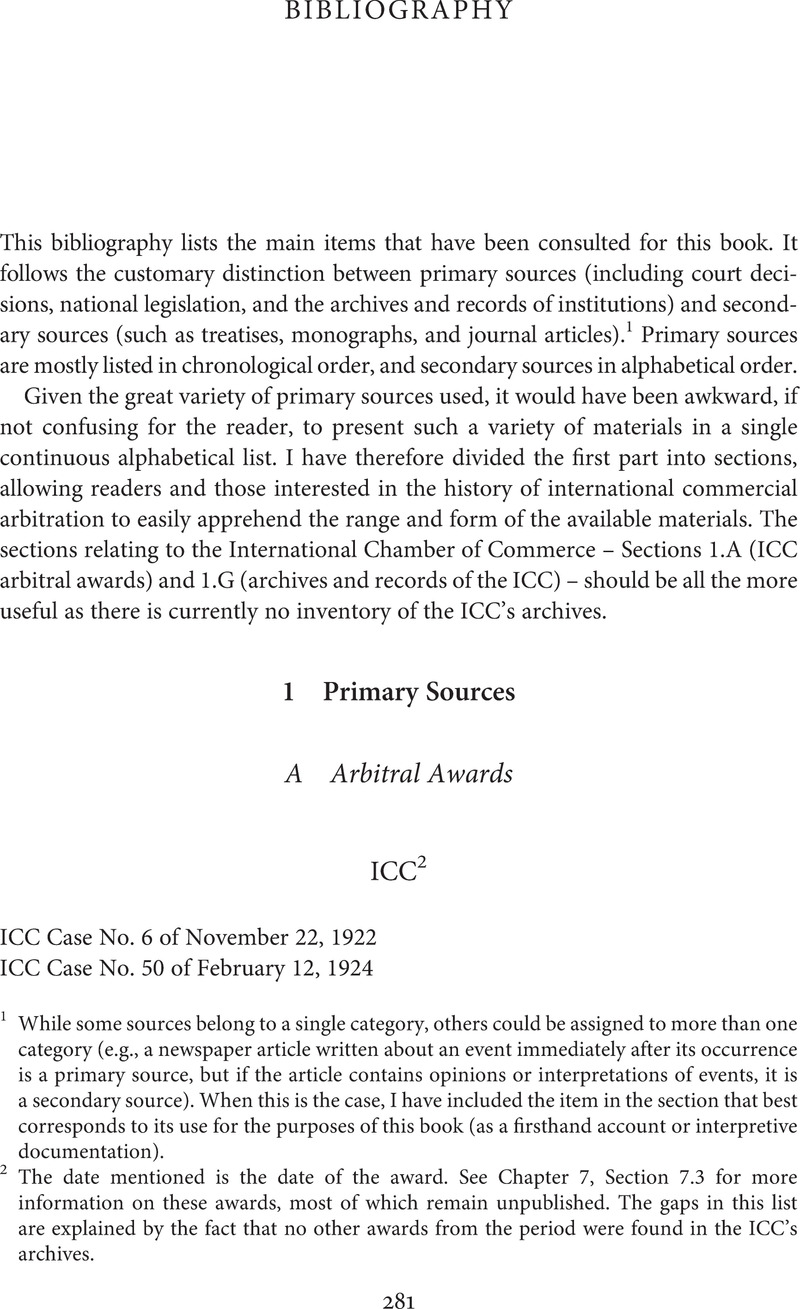
1 While some sources belong to a single category, others could be assigned to more than one category (e.g., a newspaper article written about an event immediately after its occurrence is a primary source, but if the article contains opinions or interpretations of events, it is a secondary source). When this is the case, I have included the item in the section that best corresponds to its use for the purposes of this book (as a firsthand account or interpretive documentation).
2 The date mentioned is the date of the award. See Chapter 7, Section 7.3 for more information on these awards, most of which remain unpublished. The gaps in this list are explained by the fact that no other awards from the period were found in the ICC’s archives.
3 The date is most likely June 28, 1931, as cases 380–83 and 387 involved the same claimant and sole arbitrator, and the hearing in each of these cases took place in April 1931 at the International Chamber of Commerce.
4 In Cases 768–70, the hearing took place on January 18, 1954, at the International Chamber of Commerce.
5 The award states “14 January” only; the year was most likely 1952 as the arbitrator was appointed on November 21, 1951.
6 The arbitration agreement was signed by the parties on January 19, 1954.
7 The dates of Brochures Nos. 21 and 77 are not mentioned on the documents themselves; they are most likely 1922 and 1931, respectively.
8 Some of these pamphlets were numbered, while others were unnumbered leaflets.
9 Articles published anonymously in World Trade are listed by their title.
10 The Clémentel papers are kept in the Archives départementales du Puy-de-Dôme in Clermont-Ferrand, France. They are listed here in order of their reference numbers.
11 Louis-Dreyfus’s article appeared in three consecutive issues of Courrier du commerce. See Chapter 4, Section 4.3.2 (and n. 66).
12 Articles published anonymously are listed by their title.
13 The titles of New York Times articles are reproduced verbatim.
To save this book to your Kindle, first ensure [email protected] is added to your Approved Personal Document E-mail List under your Personal Document Settings on the Manage Your Content and Devices page of your Amazon account. Then enter the ‘name’ part of your Kindle email address below. Find out more about saving to your Kindle.
Note you can select to save to either the @free.kindle.com or @kindle.com variations. ‘@free.kindle.com’ emails are free but can only be saved to your device when it is connected to wi-fi. ‘@kindle.com’ emails can be delivered even when you are not connected to wi-fi, but note that service fees apply.
Find out more about the Kindle Personal Document Service.
To save content items to your account, please confirm that you agree to abide by our usage policies. If this is the first time you use this feature, you will be asked to authorise Cambridge Core to connect with your account. Find out more about saving content to Dropbox.
To save content items to your account, please confirm that you agree to abide by our usage policies. If this is the first time you use this feature, you will be asked to authorise Cambridge Core to connect with your account. Find out more about saving content to Google Drive.